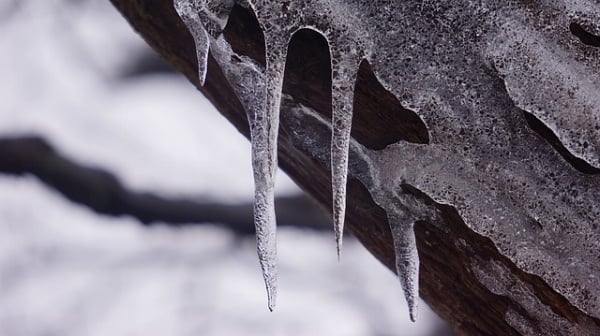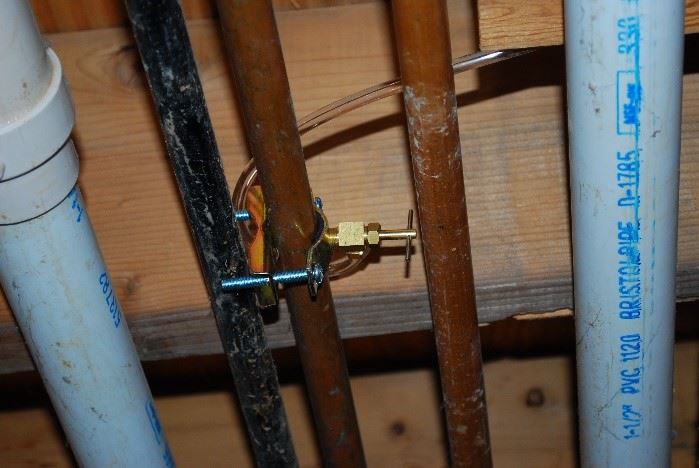The Leading Winterizing Strategies: A Handful of Approaches to Guard Pipe Bursts
The Leading Winterizing Strategies: A Handful of Approaches to Guard Pipe Bursts
Blog Article
Nearly everybody will have their personal assumption in relation to How to stop pipes from freezing during the winter.

All house owners who live in temperate environments need to do their best to winterize their pipes. Failing to do so can spell disaster like icy, fractured, or burst pipes.
Try a Hair Dryer or Warmth Weapon
When your pipelines are almost freezing, your dependable hair clothes dryer or warmth gun is a blessing. If the warm towels do not help dislodge any kind of working out ice in your pipes, bowling warm air straight into them may help. You might finish up damaging your pipes while attempting to melt the ice.
Open Closet Doors Hiding Plumbing
When it's chilly outside, it would be handy to open up closet doors that are camouflaging your pipelines. Doing this tiny trick can maintain your pipelines warm and also limit the possibly hazardous outcomes of freezing temperatures.
Require Time to Cover Exposed Pipes
One cool and also easy hack to heat up cold pipes is to wrap them with cozy towels. You can additionally use pre-soaked towels in hot water, simply do not forget to wear protective gloves to secure your hands from the warmth.
Switch on the Faucets
When the temperature level declines and it seems as if the frigid temperature level will last, it will assist to activate your water both indoors and outdoors. This will maintain the water moving via your plumbing systems. Additionally, the movement will certainly reduce the cold process. Notably, there's no demand to transform it on full blast. You'll wind up losing gallons of water this way. Rather, go for about 5 declines per minute.
Turn off Water When Pipelines are Frozen
If you observe that your pipelines are completely frozen or practically nearing that phase, transform off the major water valve right away. You will usually find this in your basement or utility room near the heating system or the front wall surface closest to the street. Turn it off immediately to prevent further damages.
Don't neglect to shut external water sources, as well, such as your connection for the garden home. Doing this will certainly prevent extra water from filling up your plumbing system. With more water, even more ice will load up, which will ultimately lead to break pipes. If you are unsure concerning the state of your pipelines this wintertime, it is best to call a professional plumber for an examination. Taking this proactive method can save you countless bucks out of commission.
All house owners who live in warm environments need to do their finest to winterize their pipelines. Failure to do so can spell disaster like icy, fractured, or burst pipelines. If the warm towels do not assist dislodge any resolving ice in your pipelines, bowling hot air straight right into them may help. Turn off the primary water shutoff instantly if you notice that your pipes are completely icy or practically nearing that stage. With more water, even more ice will certainly load up, which will ultimately lead to rupture pipes.
PREVENT YOUR PIPES FROM FREEZING THIS WINTER
A Leading Cause of Property Damage
When the weather is taking a deep nose dive into the cold dreary days, the risk of your pipes freezing and potentially bursting skyrockets. Unfortunately, during these cold dreary months, burst pipes are the most common denominator for property damage. The pipes that are most at the risk are those that are in areas where it is most cold in your home. For instance, pipes located in interior places such as basements, attics, and your garage. Unfortunately, that doesn’t mean that the pipes running through your cabinets or exterior walls can’t freeze. Good news, however, is that you can do things to help prevent pipes from freezing.
How to Prevent Pipes From Freezing
Once the temperature starts to drop during the winter, you should be taking the proper measures needed to ensure that your pipes stay warm and that there is circulation of water through them. Some steps that experts may recommend could go against your better judgement when it comes to saving water and heat. However, it would go without saying that when expenses are compared, damaged pipes could put a bigger dent in your wallet than a water bill.
What Can I Do?
Keep your garage door closed. This is very important, especially if you have water supply lines running through your garage. Open your kitchen and bathroom cabinets to allow warm air to circulate through them. Allow air circulation throughout your home. Keeping the interior doors open will once again allow the warm air to circulate inside your home. Ensure your thermostat is running the same temperature throughout the night and day. If you plan to be away from home during the cold months, set your temperature no lower than 55° F. This should provide enough heat to keep the pipes warm and prevent any remaining water inside the pipes from freezing. For more of a long-term solution, add insulation to attics, basement, and other crawl spaces around your home. By allowing your faucet to drip, it will alleviate pressure in the system. This is important because the pressure that is created between the blockage and the faucet can potentially cause the pipes to burst. Allowing the faucet to drip will prevent the pressure from building up, therefore keeping the pipes from bursting. Seal any cracks, openings, and crawl spaces around your home to prevent cold air from coming inside. This keeps your pipes-not to mention your home-warmer and less susceptible to issues caused by freezing temperatures. For the pipes in your home that are easily accessible, applying electrical tape to them might prevent them from freezing over. This is a quick fix, as you can apply the tape directly to the pipe. There are two options for heating tapes. One turns on and off by itself when it senses heat is needed. The other type of heating tape needs to be applied when heat is needed and removed when not necessary. If you have exposed pipes in your home, you can check this website to take a look at a few options that would be available at a shop near you.

Do you appreciate more info about Winterizing Your Pipes? Create feedback further down. We would be glad to see your ideas about this review. We hope to see you back again in the future. For those who liked our article if you please do not forget to pass it around. I am grateful for your time. Kindly visit our blog back soon.
Visit Url Report this page